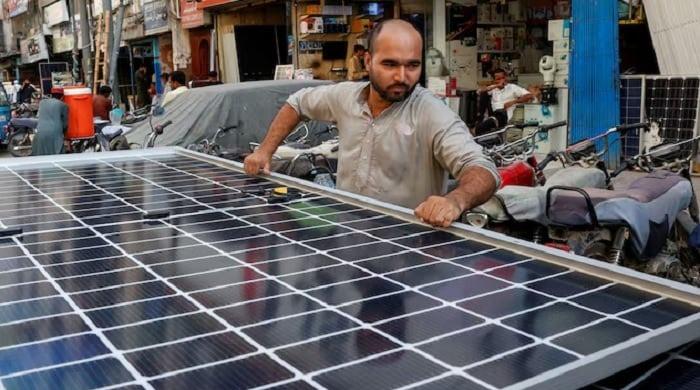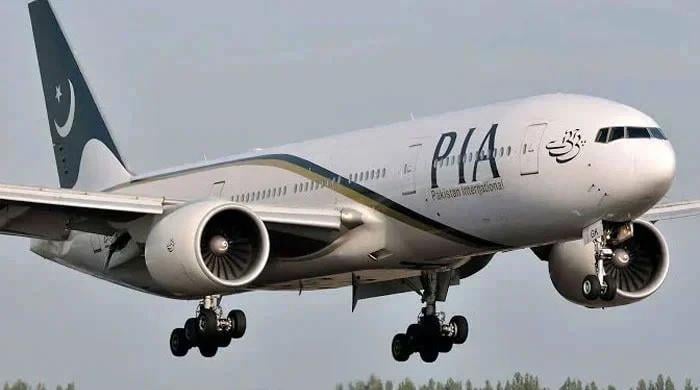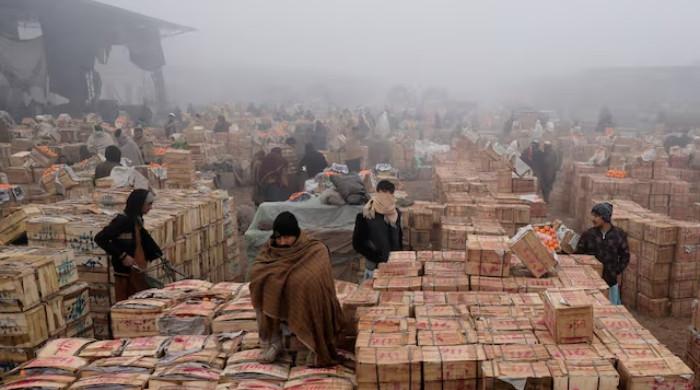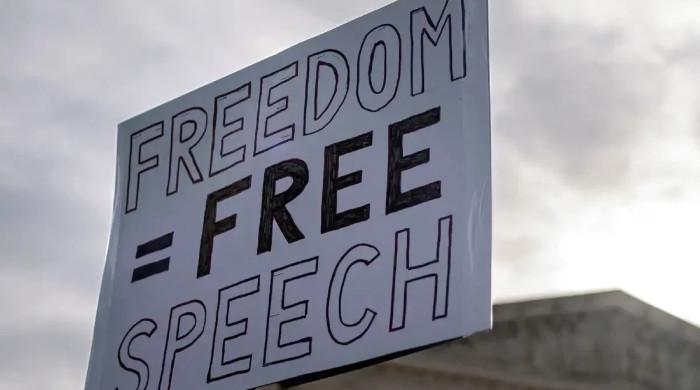The politics of provincial lines
Calls for new provinces are hardly new as every manifesto, campaign at some point has featured promise of more provinces
August 25, 2025
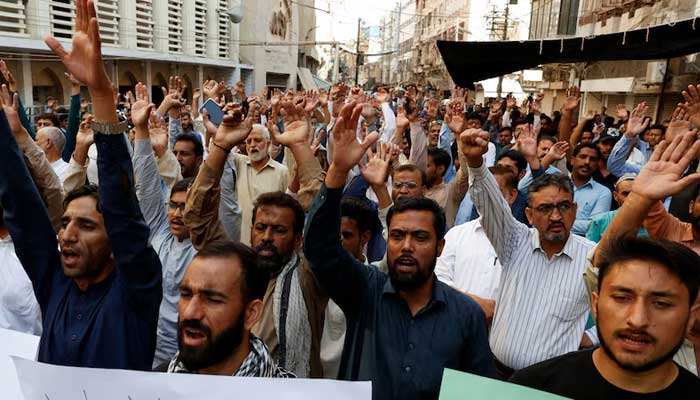
Ever since the advent of the parliamentary supermajority, the eyes have been watching more intently, the ears have popped wider, and the nose seems sharper than ever sniffing for what some call the 27th brew of the season.
Reports of this so-called concoction began trickling in almost as soon as the 26th was poured into the Assembly on October 21, 2024.
But a year later, the aroma of the 27th feels much more pungent. Autumn, it seems, is no longer just about falling leaves; in Pakistan, it is fast becoming constitutional fall.
For the uninitiated: on August 12, 2025, a 27th Constitutional Amendment Bill was laid before the National Assembly. Its stated aim? To carve a "West Punjab" out of the existing Punjab, consisting of the Faisalabad and Sahiwal divisions.
On paper, a new province. In practice, perhaps the first domino. History suggests these proposals rarely come alone. One province today, several more tomorrow — especially when political arithmetic meets the temptations of territorial redrawing.
Calls for new provinces are hardly new. From Imran Khan, Bilawal Bhutto and the incumbent president, all who once dabbled with the South Punjab idea, to Shehbaz Sharif's nostalgia for a restored Bahawalpur to Miftah Ismail, Khalid Maqbool Siddiqi, and others — every manifesto, every campaign, every TV clip has, at some point, featured the promise of more provinces.
And the reasoning is always identical, rehearsed almost to the point of cliche: administrative efficiency, better local governance and equitable use of funds.
But promises on campaign trails differ from the hard realities of statecraft. Pakistan would not be the first country to redraw its internal map. The lesson, though, has been clear: when nations split their provinces, they do so on administrative grounds, not on whimsical or politically expedient ones. Which begs the obvious: what exactly is Pakistan doing?
If reports are true, the endgame is not one new province but as many as ten more — taking Pakistan from four to fourteen provinces. Three each from Sindh and Khyber Pakhtunkhwa, another three from Balochistan, and five from Punjab. At Partition, our provinces were borrowed wholesale from the British map (with Punjab, of course, cleaved brutally between India and Pakistan). Since then, the fault lines have shifted — from administrative logic to a more volatile mix of language, ethnicity, and religious identities.
Take Sindh as a case study. If divided administratively, the map would be relatively straightforward: Karachi-Hyderabad as one province, Mirpurkhas-Shaheed Benazirabad as another, and Larkana-Sukkur as a third.
But try splitting Sindh along ethnic lines and you invite an impossible puzzle: Sindhi, Thari, Siraiki, Vicholi speakers all intermixed, none confined neatly within boundaries — with a possible uprising questioning such divisions. Which raises the uncomfortable question: if we divide Sindh by ethnicity, will Punjab be next — split along Siraiki, Punjabi, Oadki and Hindko lines? Will Balochistan fracture along tribal lines? And at what point does this slide toward deja vu: another Bangladesh in the making, born from ethnic grievances mismanaged and politicised?
The danger, then, is not merely whether Pakistan can administratively manage more provinces. The danger is whether we can resist the temptation to redraw borders for political gain rather than governance needs. Carving provinces may feel like reform, but without clarity of purpose, it risks becoming little more than gerrymandering with constitutional ink.
Here is another crumb for thought: if every political party has, at one time or another, promised new provinces, why has it never actually happened? What has stopped our parliamentarians from locking hands across the aisle and doing the deed once and for all? Why now, suddenly, has the dam of restraint broken?
If Bilawal Bhutto has long styled himself as the champion of South Punjab, where has this passion evaporated when it comes to the separation of Karachi, a demand voiced no less vociferously?
If our current prime minister has always thundered about restoring Bahawalpur to its provincial glory, why did his own party never bother to pass a resolution during its many years at the helm in Punjab? Have our politicians suddenly discovered the gospel of administrative reform, or have they simply discovered each other? Perhaps the real breakthrough is not in governance, but in political barter: divide them all at once, tit for tat, so no one party feels short-changed. A grand provincial carve-up, not piecemeal surgery.
Another theory, of course, lurks in the shadows: the weakening of "Takht-e-Lahore". For decades, Punjab has been the decisive province, the kingmaker of Islamabad. Win Punjab, and you win Pakistan.
By that logic, the only way to loosen the throne's grip is to shatter the throne itself. Break Punjab into pieces, dilute its electoral weight, and the centre finally breathes easier. In this light, the multiplication of provinces looks less like reform and more like political insurance — ensuring that no single region can again hold the centre hostage.
The trouble, of course, is constitutional. Article 239(4) of the Constitution is explicit: no province may be divided without the consent of its own assembly. A neat safeguard on paper.
But then again, in Pakistan, constitutional "safeguards" are less firewalls than speed bumps, waiting to be bulldozed by the next amendment. If the 27th Amendment chooses to strike out 239(4), the map is once again fair game. Provinces could then be bent to the will of the centre, punished or rewarded depending on compliance, redrawn and redacted like entries in a child’s notebook. Break a province when it grows unruly, merge it back when it becomes useful.
Finally, there are the finances. In an economy bent by the IMF’s will and kneaded by the World Bank’s prescriptions, no constitutional manoeuvre can be separated from the arithmetic of money. The creation of new provinces is not merely a cartographic exercise; it is a fiscal recalibration. The most obvious advantage for the centre lies in the resetting of the National Finance Commission Award – the perennial thorn. Under the existing constitutional mandate, the NFC Award only grows in size, shifting more and more resources away from the centre and toward the provinces.
For years, this has been a source of quiet resentment in the federal capital, with bureaucrats and ministers alike lamenting that the centre is left with little more than debt repayments and defence after the provinces have taken their share. A multiplication of provinces offers an escape hatch: the slate wiped clean, the formula rewritten, the demon finally slain. Reset it, diminish it, rejig the distribution on terms more palatable to the centre — suddenly, what looked like administrative reform begins to look suspiciously like fiscal opportunism.
But even if the NFC arithmetic is rewritten, the question of sheer cost remains. Provinces are not conjured out of thin air. Each new province comes with its own government buildings, assemblies, ministries, police forces, postal services, infrastructure and armies of new bureaucrats and parliamentarians. The bill runs not into millions but into billions.
There will be new salaries for new MPAs, new perks for new ministers, new governor houses, new courts and new vehicles with flashing blue lights. Can a state already struggling to pay off its creditors afford such luxuries of expansion? Or are we about to mortgage the future further in the name of governance reform that may never actually materialise?
Food for final thought: ever since the chief minister of Punjab assumed office, critics have complained of an unrelenting obsession with Lahore. Perhaps the complaints were misplaced. Perhaps Lahore was never just the capital of Punjab, but the blueprint for a new province waiting patiently in the wings. Promised from the beginning, hidden until convenient, unveiled only when the time was ripe.
If so, one is left to wonder: what else is hidden in the drawers of this supermajority? What other maps, amendments and manipulations are being sketched behind closed doors, awaiting their season of disclosure? If ‘constitutional fall’ is indeed the new season, then brace yourself — leaves may not be the only things that drop.
Disclaimer: The viewpoints expressed in this piece are the writer's own and don't necessarily reflect Geo.tv's editorial policy.
The writer is a lawyer.
Originally published in The News




